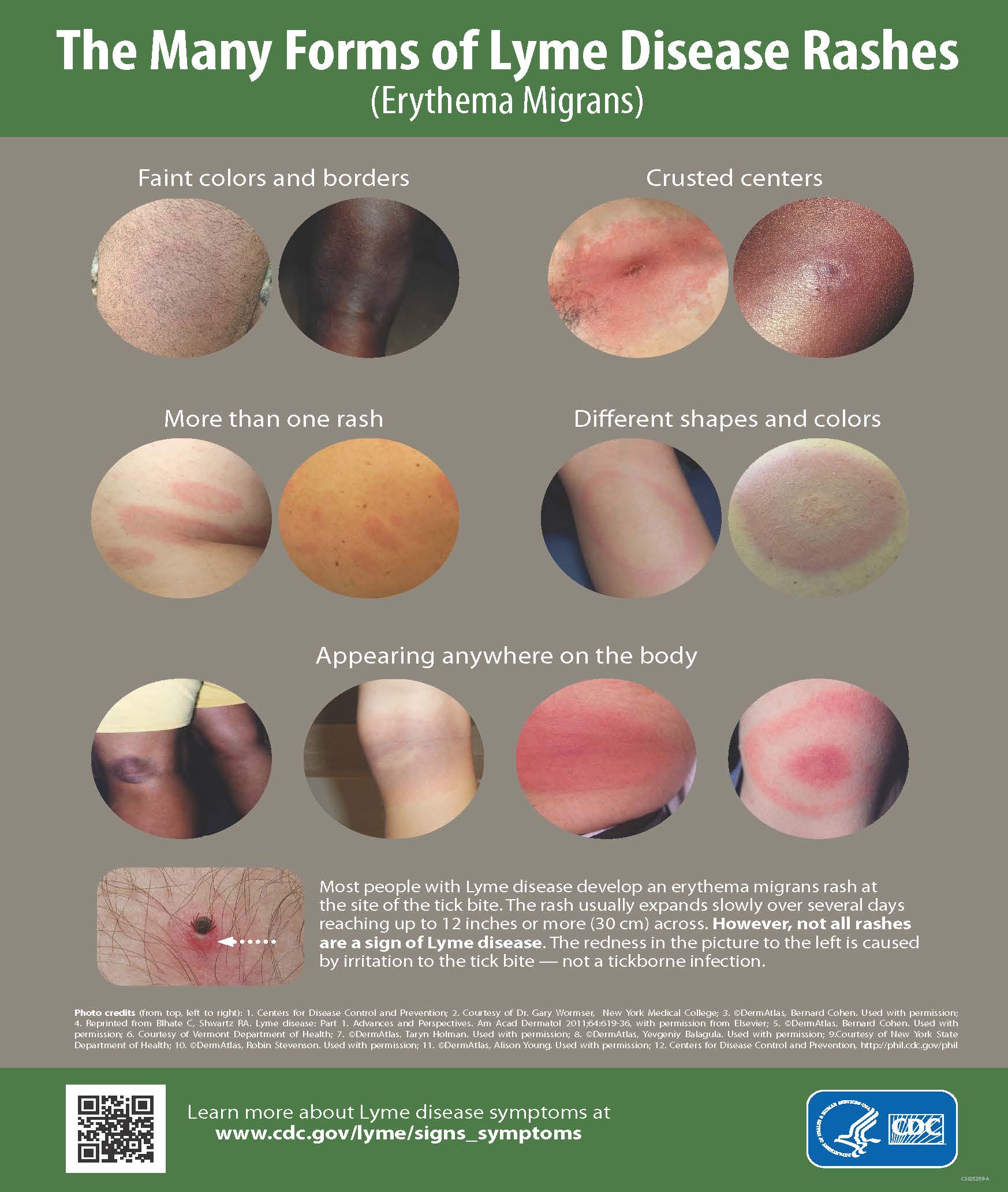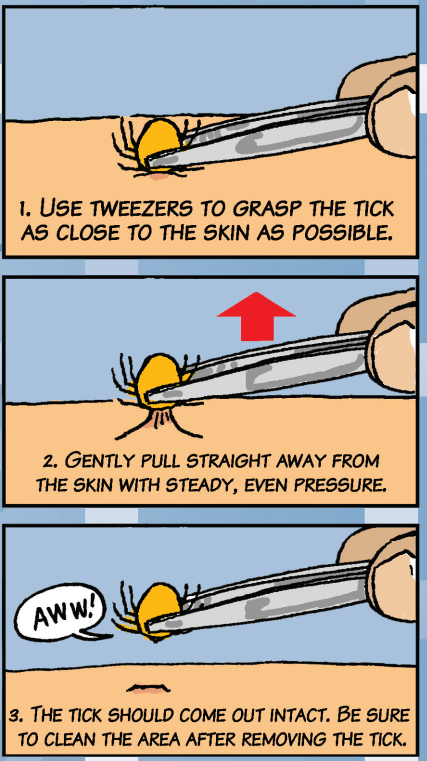Lyme disease is the most reported tick-borne disease in the Fairfax area. In 2025, 80* cases of Lyme disease have been reported in the Fairfax Health District so far. In a voluntary survey provided to individuals with confirmed cases of tickborne diseases, only 23% reported finding a tick attached or on them prior to their diagnosis. Exposure to ticks can occur in many places, including your own backyard. It is important to always perform a tick check after spending time outside, especially if you have been in brushy, wooded, or high grass areas. *Preliminary data subject to change.
Lyme disease is spread through the bite of an infected blacklegged tick (also known as a deer tick). If left untreated, the disease can spread to joints, the heart and the nervous system.
Recognize the Symptoms

Early symptoms of Lyme disease typically occur 3 to 30 days after the tick bite and include:
- A bull’s-eye rash (Only 70 to 80 percent of people with Lyme disease get this rash)
- Fever
- Headache
- Achy muscles and joints
- Fatigue
If you have symptoms or signs of Lyme disease or another tick-borne illness, see your doctor – even if you don’t remember being bitten by a tick. Most cases of Lyme or other tick-borne diseases can be treated with a few weeks of antibiotics. Learn more about the symptoms of Lyme disease.
Prevent and Protect
Avoiding ticks is the best defense against Lyme disease and other tick-borne infections. It is important to be extra vigilant from March through October when ticks are most active. Blacklegged ticks are also active on warm winter days when the temperature is greater than 40 degrees Fahrenheit.
Have a Tick-Free Yard
Blacklegged ticks need the higher humidity levels of woodland to survive and die quickly in drier environments. Keep ticks out of your yard by:
- Increasing exposure to sun and air by removing leaf litter
- Mowing the lawn frequently
- Clearing tall grass and brush around houses and at the edges of lawns
- Laying down wood chips or gravel where laws butt up against wooded areas
- Building fences to discourage animals, such as deer and raccoons, from entering your yard
Permethrin is an insecticide that is effective in both killing and repelling ticks in your yard. Contact a professional pesticide company to apply pesticides at your home.
Use Insect Repellent
- Use EPA-registered repellents containing DEET, picaridin, IR3535, Oil of Lemon Eucalyptus (OLE) or para-methane-diol (PMD), or 2-undecanone and always follow product label instructions
- American Academy of Pediatrics recommends using products containing no more than 30% DEET on children
- Never use oil of lemon eucalyptus and para-methane-diol on children under 3 years of age
- Apply repellent to your clothing as well as exposed skin
- If you are using sunscreen, apply sunscreen first and insect repellent second
- Do not use any insect repellent on babies under 2 months of age
Dress to Protect
Long sleeves and pants in light colors provide protection and make it easier to spot ticks that may have hitched a ride on your clothing. Tuck pant legs into long socks to help prevent ticks from climbing up your shoes and socks and onto your skin.
Permethrin can be used to treat clothing and gear ahead of time and can last through several washes. When used properly, it will kill ticks before they bite.
Check for Ticks After You Come Inside
- Check your clothing; tumble dry clothing on high heat for 10 minutes to kill any remaining ticks
- Bathe or shower as soon as possible
- Use a mirror or ask a friend, partner, or spouse to help check your body for ticks; pay close attention to warm, moist areas that ticks are drawn to including armpits, the groin area, in and around ears and hairline, belly button, backs of your knees and between your legs
- Check your children, gear, and pets for ticks

Remove Ticks Safely
If you do get bitten, follow these steps to remove the tick:
- Use fine-tipped tweezers to grasp the tick as close to the skin surface as possible
- Pull upward with steady, even pressure. Do not twist or jerk the tick; this may cause the mouthparts to break off and remain in the skin
- After removing the tick, thoroughly disinfect the bite site and wash your hands with soap and water
- Do not squeeze, crush, or puncture the body of the tick
- Do not use nail polish, petroleum jelly, or a hot match to make the tick detach from your skin
- Have the tick identified
Fairfax County Health Department offers a free tick identification service.
The Health Department does not test for Lyme disease or other tick-borne diseases. Still, having your tick identified is useful if you develop symptoms and need to see your medical provider.
After you remove the attached tick, you can get it identified by the Health Department by submitting a photo online, bringing it in, or mailing it in.

